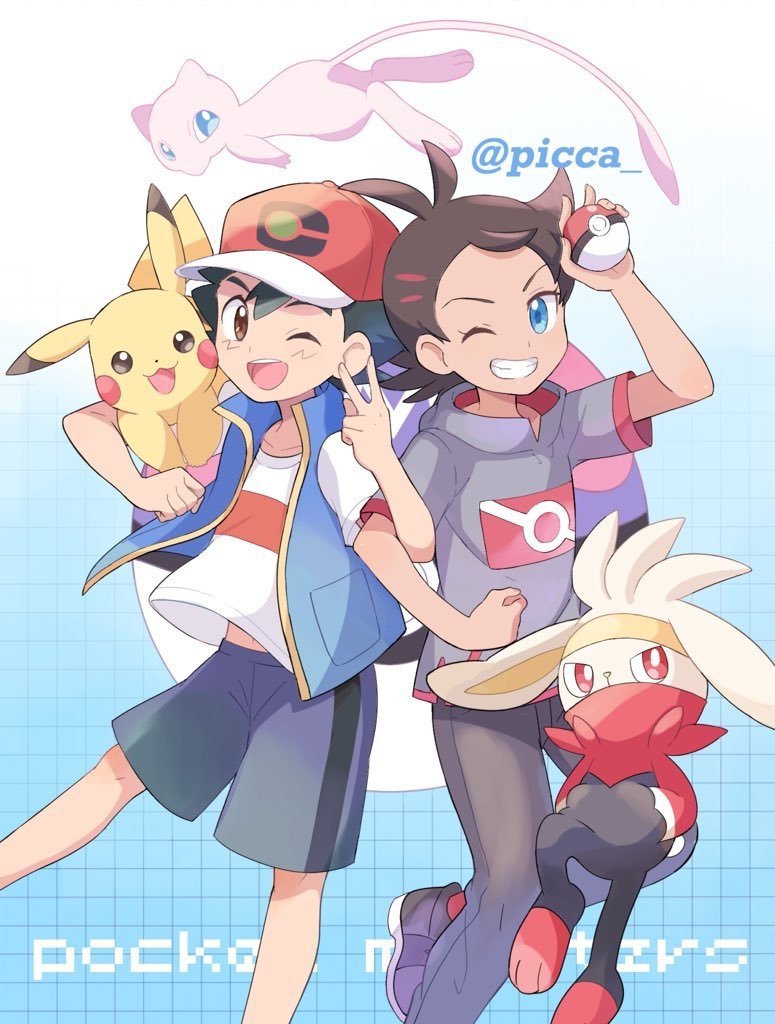

The choices are: Bulbasaur (Grass), Charmander (Fire), and Squirtle (Water). The player can choose one of three Starter Pokémon at the beginning of the game. Some Pokémon have to be traded so that they can evolve. Players can also trade Pokémon with or fight against other players through a Game Link Cable. After defeating them, the player must then defeat the Pokémon Champion, which will result in the player becoming the new Pokémon Champion. After defeating the eight Gym Leaders, the player progresses to the Elite Four, where he/she fights the four best trainers in the entire region. Each Gym specializes in a type of Pokémon, resulting in certain types of Pokémon being effective in certain gyms, while other types of Pokémon are weak in certain gyms. The player must travel across Kanto and defeat the eight Gym Leaders at their Gyms, earning a Badge corresponding with that Gym. When a Pokémon evolves, they develop better stats and may also change types. This can happen when they reach a certain level, are traded with another character or player, or are given an evolutionary stone. Some Pokémon can evolve into another Pokémon.

Elemental strengths and weaknesses encourage the player to keep a diverse selection of Pokémon to counter various types of enemy Pokémon effectively. Pokémon receive less damage from and deal more damage to elements they are strong against, while on the other hand dealing less damage to and taking more damage from elements they are weak against. Each element has its own weakness, such as Fire Pokémon being weak against Water Pokémon, as well as its own strength, such as Water Pokémon being strong against Fire Pokémon. There are 15 different elemental types of Pokémon, consisting of Bug, Dragon, Electric, Fighting, Fire, Flying, Ghost, Grass, Ground, Ice, Normal, Poison, Psychic, Rock, and Water. Pokémon also come in different elemental types. In total, there are 165 moves in Generation I, though a Pokémon can only have four moves and will have to forget a move to learn a new one. Pokémon also have moves, which can be used to attack another Pokémon or to heal oneself. The lowest level a Pokémon can be is level 1, while the highest is level 100. These stats increase when the Pokémon gains a level. Players can change the six Pokémon in their lineup by accessing the Pokémon storage system, which contains 12 "boxes" that each hold 20 Pokémon (240 Pokémon in total).Įach Pokémon has its own stats, which consist of Attack, Defense, Speed, Special, and HP. Once the player catches a seventh Pokémon, it automatically transfers to a Pokémon Storage System.

The player is limited to carrying only six Pokémon at a time. Lowering the Pokémon's health weakens it, allowing the Trainer to capture it with a Poké Ball. When a wild Pokémon appears, the player battles it with a previously caught Pokémon to lower its health. To find and catch a Pokémon, the player, who is a Pokémon Trainer, walks around in tall grass (or caves or uses the Hidden Move surf on water). The gameplay primarily consists of the player trying to obtain all 151 Pokémon, defeating all the Gym Leaders, the Elite Four, and the Pokémon Champion while encountering other Pokémon Trainers along the way. These games featured the 151 Pokémon starting with Bulbasaur.Ĭhronologically, Red, Green, Blue and Yellow take place around the same time as Generation III. They were released on the Game Boy while Pokémon Stadium for the Nintendo 64 in Japan. Later, they were followed by the same Pokémon Yellow as the one in Japan. Internationally, the first two games were released as Pokémon Red and Blue, using the code, script and artwork of Blue, instead of Green. The games begin with Pokémon Red and Pokémon Green in Japan, which are later joined with a third version Pokémon Blue and a special edition Pokémon Yellow. Generation I ( 第一 ( だいいち ) 世代 ( せだい ), Dai Ichi-sedai) (sometimes referred to as the Color Generation, due to the names of the versions released) is the first instalment of the Pokémon franchise. Let's Go, Pikachu! and Let's Go, Eevee! (Generation VII) We accept and greatly appreciate cheat submissions from our valued readers.English and Japanese logos of the final Gen I game Final ThoughtsĪs you can see, there’s a lot of work to do to complete the list, but you can always help us improve this page.
#POKEMON SMILE CHEATS FREE#
If you have a cheat request feel free to mention the game and we will try our best to find the working cheat codes for that game. We work hard to collect the best cheats for your favorite Pokemon game.


 0 kommentar(er)
0 kommentar(er)
